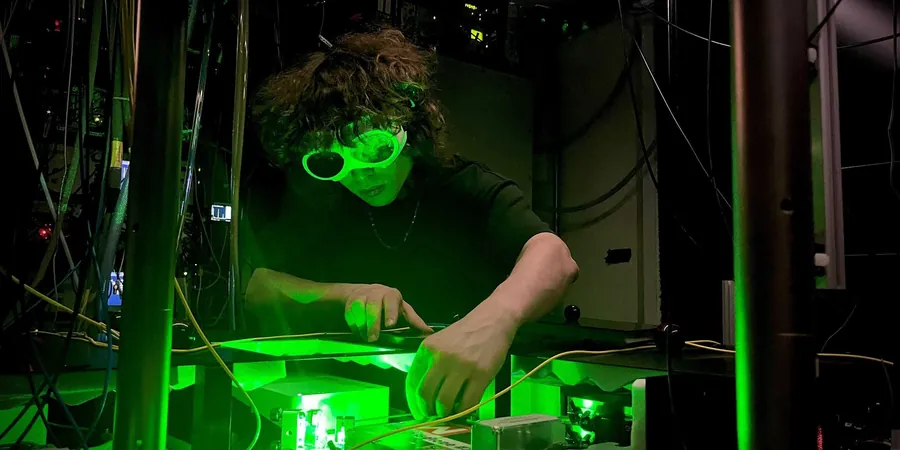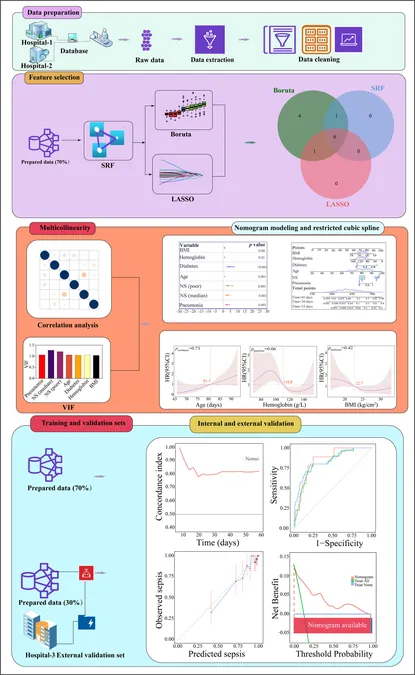
Swiss Physicists May Be On The Brink of Discovering a Fifth Force of Nature!
2025-07-19
Author: Jacques
In a groundbreaking study, Swiss physicists are pioneering a novel approach to hunt for what could be the elusive fifth force of nature—a mysterious force that may unveil some of the universe's deepest secrets. Centered on a technique called atomic spectroscopy, this innovative research seeks to detect minute shifts in energy levels within atoms, which could indicate a previously unknown particle influencing interactions between electrons and neutrons.
Breaking Beyond the Standard Model
Led by a dynamic team at ETH Zurich, this research aims to venture beyond the established four forces of nature: gravity, electromagnetism, and the strong and weak nuclear forces. Unlike previous efforts that relied on massive particle accelerators like the Large Hadron Collider, this team is taking a more delicate approach. By exploring electron behavior in various calcium isotopes, they hope to uncover subtle signatures of new physics that could challenge our understanding of reality.
Unraveling the Mysteries of Dark Matter
Historically, the Standard Model of particle physics has been a stellar conception—mapping out matter's structure and governing forces—yet fails to illuminate dark matter, the enigmatic substance comprising most of the universe's mass. Dark matter's presence is inferred from the behaviors of galaxies and the forces shaping the cosmos. Scientists are beginning to suspect that a new fifth force could bridge the gaps left in current theories.
Diana Prado Lopes Aude Craik, a leading physics professor at ETH Zurich, states, "The Standard Model is currently our best way to explain the universe, but it clearly has its limitations." This research team believes that an unknown force could tie together the atomic neutrons and the electrons that orbit them, potentially carried by a new particle akin to how photons transport electromagnetic forces.
Turning to Atomic Physics for Answers
Instead of bombarding particles at great speed, Craik's team is leveraging atomic physics to find minute clues of this potential force. "As atomic physicists, we can measure atoms with incredible precision," she explained. Their investigation compares isotopes of calcium with energy shifts as small as 100 millihertz—an extraordinary level of accuracy that greatly surpasses previous experiments.
Unveiling New Clues from Calcium Atoms
Isotopes, which have the same number of protons and electrons but differ in neutron count, offer a unique glimpse into how these variations can affect electron experiences within atoms. The research focuses on five stable calcium isotopes, each possessing 20 protons but varying in neutron numbers. Utilizing advanced instruments like an ion trap, the researchers excitated these isotopes with lasers to capture the emitted light during energy transitions.
Collaborative Efforts Deliver Surprising Results
Despite their exceptional precision, the scientists needed to dismiss other known phenomena that could explain observed energy shifts. Collaborating with teams in Germany and Australia, they confirmed their findings using more charged isotopes and explored nuclear mass ratios with unmatched accuracy. The results hinted at peculiar energy level differences that couldn’t be completely attributed to known nuclear effects, potentially pointing to unforeseen behaviors within the nucleus.
Future Directions and Implications
Though the team has yet to claim a new discovery, their findings have set new boundaries on the mass and electric charge of any particles involved with this hypothesized fifth force. They are currently measuring another energy transition in calcium isotopes, with aspirations of constructing a three-dimensional version of King’s plot to visualize energy level shifts.
As Craik notes, "We hope this will guide us in the theoretical challenges and bring us closer to unearthing this new force." Their research, titled "Nonlinear Calcium King Plot Constrains New Bosons and Nuclear Properties," published in Physical Review Letters, underscores a significant milestone in high-precision atomic spectroscopy—a method that could redefine our comprehension of the cosmos.
This exciting pursuit of a fifth force, executed through meticulous measurements rather than colossal machinery, offers a revolutionary avenue to probe the universe's hidden framework. It brings us a step closer to potentially unlocking the mysteries of dark matter and challenging existing physics theories, setting the stage for discoveries that could transform our understanding of reality.









 Brasil (PT)
Brasil (PT)
 Canada (EN)
Canada (EN)
 Chile (ES)
Chile (ES)
 Česko (CS)
Česko (CS)
 대한민국 (KO)
대한민국 (KO)
 España (ES)
España (ES)
 France (FR)
France (FR)
 Hong Kong (EN)
Hong Kong (EN)
 Italia (IT)
Italia (IT)
 日本 (JA)
日本 (JA)
 Magyarország (HU)
Magyarország (HU)
 Norge (NO)
Norge (NO)
 Polska (PL)
Polska (PL)
 Schweiz (DE)
Schweiz (DE)
 Singapore (EN)
Singapore (EN)
 Sverige (SV)
Sverige (SV)
 Suomi (FI)
Suomi (FI)
 Türkiye (TR)
Türkiye (TR)
 الإمارات العربية المتحدة (AR)
الإمارات العربية المتحدة (AR)